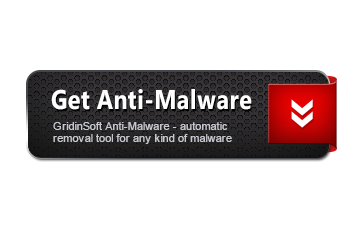The Trojan.SelfDelete.Powershell is considered dangerous by lots of security experts. When this infection is active, you may notice unwanted processes in Task Manager list. In this case, it is adviced to scan your computer with GridinSoft Anti-Malware.

Gridinsoft Anti-Malware
Removing PC viruses manually may take hours and may damage your PC in the process. We recommend using GridinSoft Anti-Malware for virus removal. Allows to complete scan and cure your PC during the trial period.
What Trojan.SelfDelete.Powershell virus can do?
- Executable code extraction
- Injection (inter-process)
- Injection (Process Hollowing)
- Creates RWX memory
- Repeatedly searches for a not-found process, may want to run with startbrowser=1 option
- Reads data out of its own binary image
- The binary likely contains encrypted or compressed data.
- Executed a process and injected code into it, probably while unpacking
- Installs itself for autorun at Windows startup
- Creates a hidden or system file
- Creates a copy of itself
- Anomalous binary characteristics
Related domains:
z.whorecord.xyz |
a.tomx.xyz |
How to determine Trojan.SelfDelete.Powershell?
File Info:
crc32: 3A638C8Cmd5: 0d8ef191f848f0ebe26f0efd7a1d46c1name: 0D8EF191F848F0EBE26F0EFD7A1D46C1.mlwsha1: 55b026a2189866ccb0204e9f77fa21cb89b0d77dsha256: 97cf0726fa37982356af117f735948c950b15aad5378ecd14985ba7940e285d6sha512: 574aadd7a28e3c744b3bd963eeabb4acd6c4e66d941c14712c9ccc3f2997870bae7820239dc33acd9942a48f7ff3168f5462cfd21cda9fc40a2045a01a97d2f9ssdeep: 12288:sJ4tm5gnkBj0aY0JQvcX6mBnK0KdQNEyYXH9tze+KGUSh61KBvs:d+gnMYaYmQvInKlU4XnzeRfc9lstype: PE32 executable (GUI) Intel 80386, for MS WindowsVersion Info:
LegalCopyright: Copyright (C) Synaptics Incorporated 1996-2010InternalName: TutorialFileVersion: 15.0.17.2 14May10CompanyName: Synaptics IncorporatedProductName: Synaptics Pointing Device DriverProductVersion: 15.0.17.2 14May10FileDescription: Synaptics Pointing Device TutorialOriginalFilename: Tutorial.exeTranslation: 0x0409 0x04b0
Trojan.SelfDelete.Powershell also known as:
| Elastic | malicious (high confidence) |
| DrWeb | Trojan.PWS.Siggen2.50645 |
| MicroWorld-eScan | Trojan.Agent.ESNZ |
| FireEye | Generic.mg.0d8ef191f848f0eb |
| ALYac | Trojan.Agent.ESNZ |
| Cylance | Unsafe |
| VIPRE | Trojan.Win32.Generic!BT |
| Sangfor | Malware |
| K7AntiVirus | Trojan ( 005680341 ) |
| BitDefender | Trojan.Agent.ESNZ |
| K7GW | Trojan ( 005680341 ) |
| Cybereason | malicious.1f848f |
| BitDefenderTheta | Gen:NN.ZelphiF.34804.OG0@ayCM6shi |
| Cyren | W32/Injector.RUAJ-7477 |
| Symantec | Trojan.Gen.MBT |
| TrendMicro-HouseCall | TrojanSpy.Win32.LOKI.SMTHG |
| Avast | Win32:Trojan-gen |
| Kaspersky | HEUR:Trojan.Win32.Kryptik.gen |
| Alibaba | Trojan:Win32/CryptInjector.f6b50b7e |
| NANO-Antivirus | Trojan.Win32.Kryptik.hmpgua |
| Tencent | Win32.Trojan.Kryptik.Hzi |
| Ad-Aware | Trojan.Agent.ESNZ |
| Emsisoft | Trojan.Agent.ESNZ (B) |
| F-Secure | Trojan.TR/Injector.owbnk |
| TrendMicro | TrojanSpy.Win32.LOKI.SMTHG |
| McAfee-GW-Edition | BehavesLike.Win32.Fareit.jh |
| Sophos | Mal/Generic-S |
| Ikarus | Trojan-Spy.LokiBot |
| Jiangmin | Trojan.Kryptik.bjw |
| Webroot | W32.Trojan.Gen |
| Avira | TR/Injector.owbnk |
| MAX | malware (ai score=81) |
| Antiy-AVL | Trojan/Win32.Kryptik |
| Microsoft | Trojan:Win32/CryptInjector.F!MTB |
| Gridinsoft | Trojan.Win32.Downloader.oa |
| Arcabit | Trojan.Agent.ESNZ |
| ZoneAlarm | HEUR:Trojan.Win32.Kryptik.gen |
| GData | Trojan.Agent.ESNZ |
| Cynet | Malicious (score: 100) |
| AhnLab-V3 | Suspicious/Win.Delphiless.X2066 |
| Acronis | suspicious |
| McAfee | Fareit-FTB!0D8EF191F848 |
| VBA32 | TScope.Trojan.Delf |
| Malwarebytes | Trojan.SelfDelete.Powershell |
| Panda | Trj/CI.A |
| APEX | Malicious |
| ESET-NOD32 | a variant of Win32/Injector.EMHC |
| Rising | Trojan.Injector!1.CB27 (CLOUD) |
| Yandex | Trojan.AvsArher.bTOmTw |
| SentinelOne | Static AI – Suspicious PE |
| Fortinet | W32/Injector.ELZG!tr |
| AVG | Win32:Trojan-gen |
| Paloalto | generic.ml |
| CrowdStrike | win/malicious_confidence_100% (W) |
| Qihoo-360 | Win32/Trojan.469 |
How to remove Trojan.SelfDelete.Powershell?
- Download and install GridinSoft Anti-Malware.
- Open GridinSoft Anti-Malware and perform a “Standard scan“.
- “Move to quarantine” all items.
- Open “Tools” tab – Press “Reset Browser Settings“.
- Select proper browser and options – Click “Reset”.
- Restart your computer.



Leave a Comment